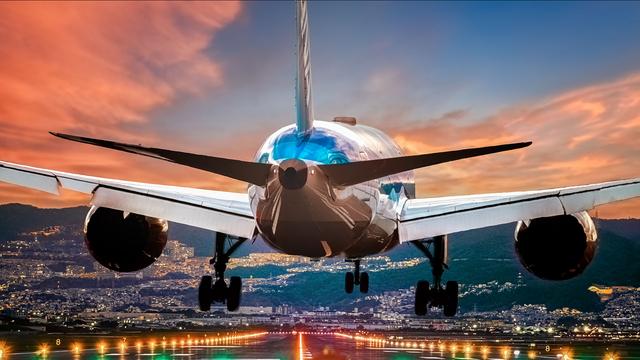Long-haul flights are often exhausting. But if they are for the passengers, they will also be for the crew of the plane. Both the pilot and the co-pilots and the stewardesses or flight attendants must also rest, not only because it is a legal right, but for safety reasons, they must take a break like anyone else.
According to aviation personnel, long-haul flights are very stressful on the body and mind. But where can crew members relax and sleep for a while?
If anyone assumes that the cabin crew have luxurious single rooms reserved somewhere on the plane, unfortunately they will be disappointed, they have spaces that are hardly more comfortable than an economy class seat.
According to Markus Wahl, spokesman for the German cockpit pilots association, the so-called “crew breaks” are quite modest.
The sleeping area for pilots is always on top of the plane. Depending on the type of aircraft, it is located directly behind from the cockpit or in front of the passenger cabins.
A short staircase leads the pilot to the sleeping area, whose room height is usually so low that he can only stand bent over there. Also, there are rarely more than one or two single beds in the small room.
Cabin crew members settle further back on the small deck between the passengers. The flight attendant rest area is in the middle or at the rear of the plane. There are usually several berths to relax on.

However, some planes don't go up, but come down to sleep. In that case, the flight attendant has to get into the area under the hold if she wants to relax briefly.
A flight commander from the US company Virgin Atlantic published a video on his Instagram account last year showing the space that the pilots have to rest, called in English crew rest, inside a modern Airbus A350. In his post, he explained that three pilots were traveling on his 9.5-hour flight, and that they took turns resting in bunk beds. In addition, it gave some details, such as that if the flight was longer, then four pilots would travel, that's why in the A350 you can find two berths instead of one. It also said that this aircraft model also had space for the rest of the crew in another part of the aircraft.
When it comes to short flights, none of the pilots usually leave the cockpit during the flight, but when the flight lasts more than eight hours, the pilots have relief. Pilots sleep, or rest during long flights, but not because they are tired, which can also happen, but because international air regulations and airline agreements dictate so.
The Spanish pilot Alfonso de Bertodano, with more than 10,000 flight hours and commander of the Boeing 787, explained to Traveler that rest times on a flight depend on many factors, to begin with, the time at which you start working: “it is not the same when you take off at 4am or 11am, nor if you have to make a single jump or not (for example Madrid-Quito-Guayaquil) , which add up to two landings, or if you fly acclimatized to the time zone or not”. But yes, in all long-haul flights, after a certain number of hours, the pilots rest.
Bertodano, who is also a psychologist, knows the ins and outs of stress very well, and points to the importance of rest in professions such as aviation. “The goal is to avoid flight fatigue and all that it entails, poor stress management, possible errors in decision-making, you can't be tired”.
There is no exact science regarding rest times, which are usually “about 3 hours”, although it depends on the number of flight hours. For example, continues Bertodano, “in a flight from Madrid to Miami we do not rest, because the duration is within the minimum. The cockpit is never left with less than 2 pilots”.
Then, the rest places of the pilots depend a lot on the duration of the flight, there are three different classes of rest area for cabin crew and pilots: Class 3: a spare seat that can recline and has a footrest. It is not generally used as a rest area, since coastal pilots do not usually leave the cockpit.
Class 2: reclining seat with a curtain for privacy. It is generally located in the business cabin. Class 1: a separate cabin away from passengers and insulated from cabin noise including single or multiple berths as in the A350. Most long-haul flights are classified as Class 1 and will require the aircraft to have a separate passenger area for the pilots.
CONTINUE READING
Spain stagnates in the fight against corruption: the country has spent a decade maintaining its levels in the Corruption Perception Index, which includes the opinion of managers and experts
The 30 best Capable Women's Briefcase: the best review on Women's Briefcase
The daring photo session of Megan Fox and Kourtney Kardashian that causes controversy: They are accused of plagiarism
Become a mystery shopper